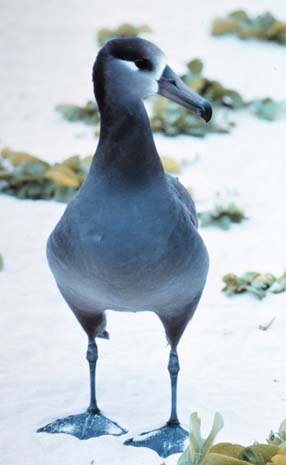The birds that fill museum display cases may be silent, but they can tell researchers a lot about themselves and about their environment. In fact, they may be good resources for learning about changes in pollution and its effect on the birds themselves.
In 2011, for example, a team of researchers found that an endangered species of albatross has been ingesting a lot more of an especially toxic form of mercury since World War II.
 Black-footed albatross. Credit: Wikipedia
Black-footed albatross. Credit: WikipediaThe scientists analyzed the feathers of black-footed albatrosses from two museums. The birds were taken from throughout the albatross’s home grounds in the northern Pacific Ocean, from Japan to the United States, from 1880 to 2002.
The scientists looked for methylmercury -- a form of mercury that’s produced by bacteria that consume a less-toxic form of the element. When consumed by the birds, it interferes with reproduction and damages the nervous and immune systems.
The museum specimens showed jumps in the levels of mercury after World War II, and again after 1990. Those jumps correspond to increases in the amount of mercury pumped into the environment from mining, coal burning, and other human activities in the albatross’s range.
The overall amount of mercury added to the environment has been declining, although Asia is producing more. Since much of the mercury from Asia finds its way into the Pacific, the albatross could face increased threats in the years ahead. In a few decades, about the only black-footed albatrosses left could be the ones in museums.

